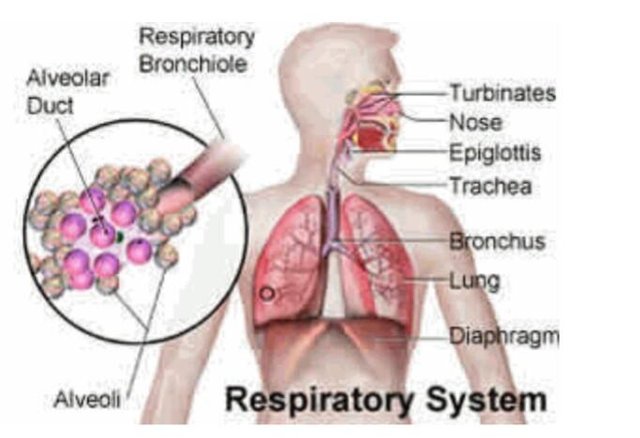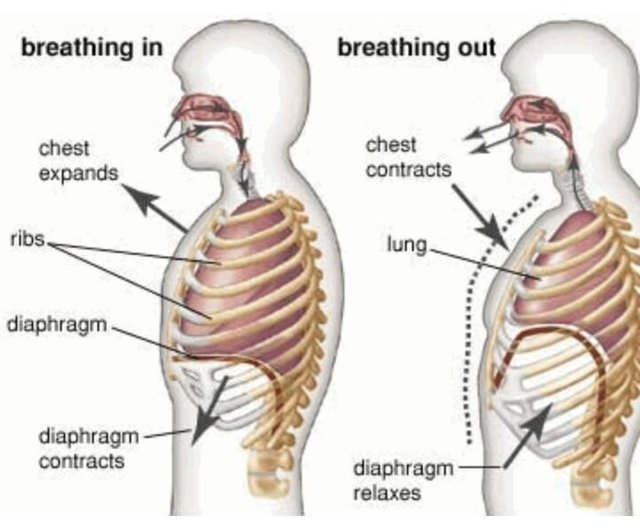##Respiratory System ##
What is the respiratory system?
Your respiratory system is made up of the organs in your body that help you to breathe. Remember, that Respiration = Breathing. The goal of breathing is to deliver oxygen to the body and to take away Carbon dioxide.

The primary function of the respiratory system is to supply the blood with oxygen in order for the blood to deliver oxygen to all parts of the body. The respiratory system does this through breathing. When we breathe, we inhale oxygen and exhale carbon dioxide. This exchange of gases is the respiratory system's means of getting oxygen to the blood. Respiration is achieved through the mouth, nose, trachea, lungs, and diaphragm. Oxygen enters the respiratory system through the mouthand the nose. The oxygen then passes through the larynx (Where speech sounds are produced) and the trachea Which is a tube that enters the chest cavity. ln the chest cavity, the trachea splits into two smaller tubes called the bronchi. Each
bronchus then divides again forming the
bronchial tubes.
The pathway
° Air enters the NOSTRILS
° passes through the NASOPHARYNZ,
° the ORAL PHARYNZ
° through the GLOTTIS
° into the TRACHEA
° into the right and left BRONCHI, Which
branches and rebranches into
° BRONCHIOLES, each of Which terminates in a cluster of
Breathing
In animals, the diaphragm divides the body cavity into the

° ABDOMINAL CAVITY, which contains the viscera (e.g., stomach and intestines) and the
° THORACIC CAVITY, which contains the heart and lungs.
The inner surface of the thoracic cavity and the outer surface of the lungs are lined with PLEURAL MEMBRANES which adhere to each other. If air is introduced between them, the adhesion is broken and the natural elasticity of the lung causes it to collapse. This can occur from trauma. And it is sometimes induced deliberately to allow the lung to rest. In either case, reinflation occurs as the air is gradually absorbed by the tissues.
Central Control Of Breathing
The rate of cellular respiration (and hence oxygen consumption and carbon dioxide production) varies with level of activity. Vigorous exercise can increase by 20-25 times the demand of the tissues for oxygen. This is met by increasing the rate and depth of breathing.
It is a rising concentration of CARBON dSIOXIDE- not a declining concentration of oxygen -thatplays the major role in regulating the ventilation of the lungs. Certain cells in the medullaoblongata are very sensitive to a drop in pH. As
the CO2 content of the blood rises above normal levels, the pH drops
[co2 + H2o -Hco3 + H+],
and the medulla oblongata responds by
increasing the number and rate of nerve
impulses that control the action of the
intercostal muscles and diaphragm. This
produces an increase in the rate of lung ventilation, which quickly brings the C62
Concentration of the alveolar air, and then of the blood, back to normal levels.
Local Control Of Breathing
The smooth muscle in the walls of the
bronchioles is very sensitive to the
concentration of carbon dioxide. A rising level of C02 causes the bronchioles to dilate. This lowers the resistance in the airways and thus increases the flow of air in and out.